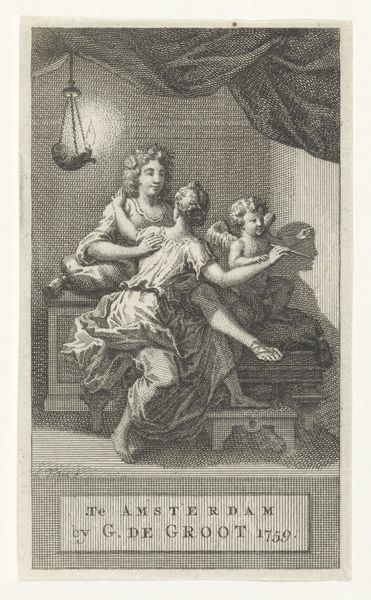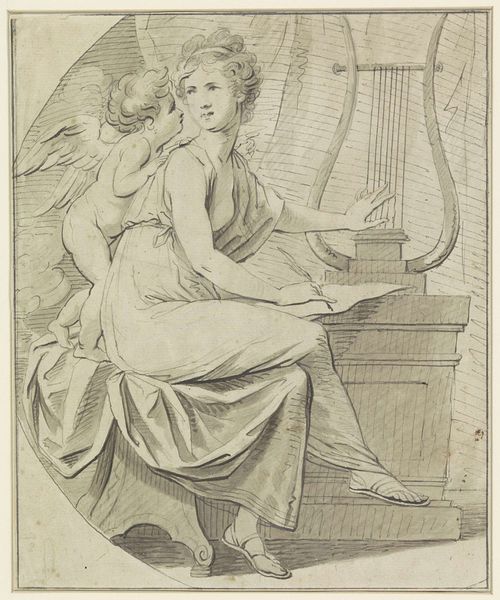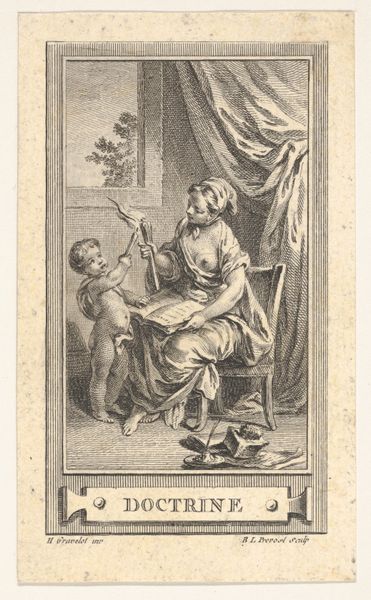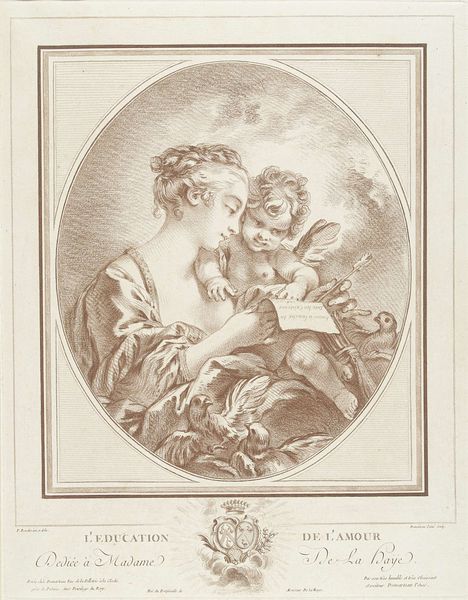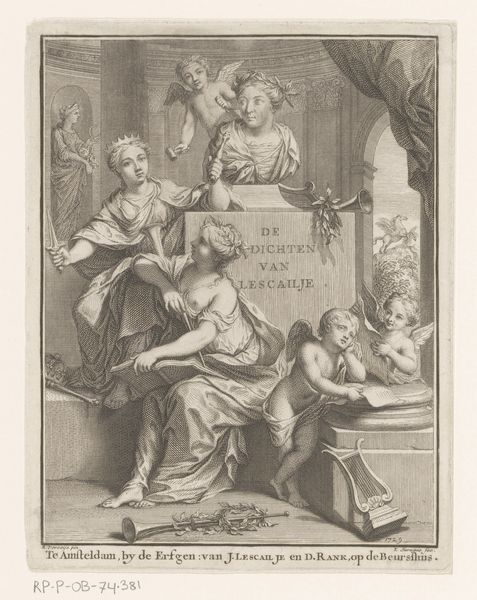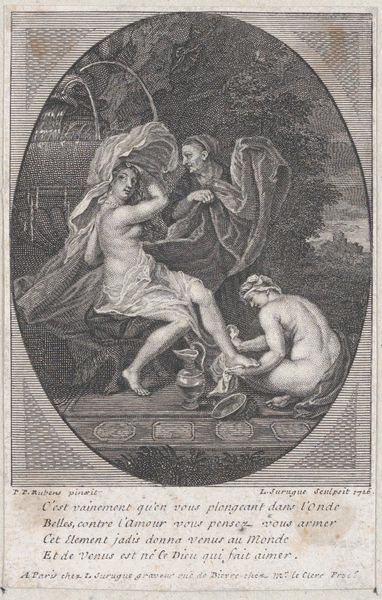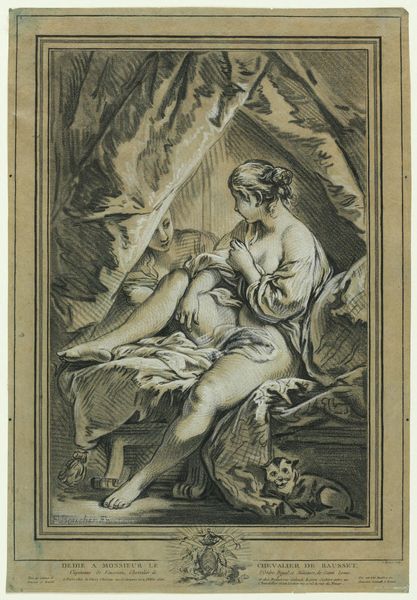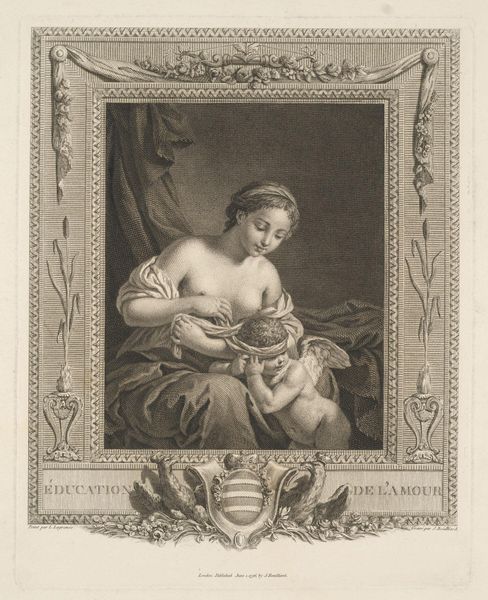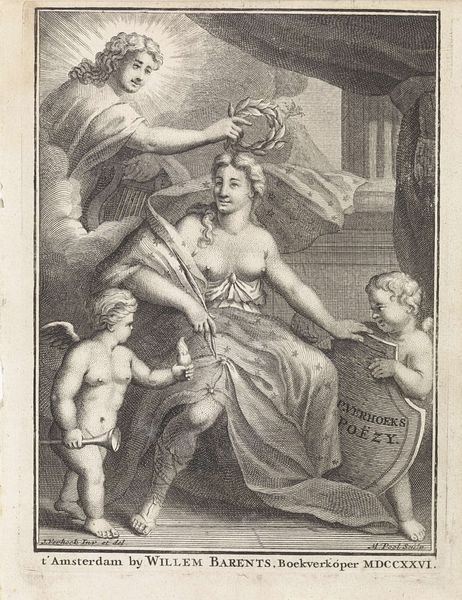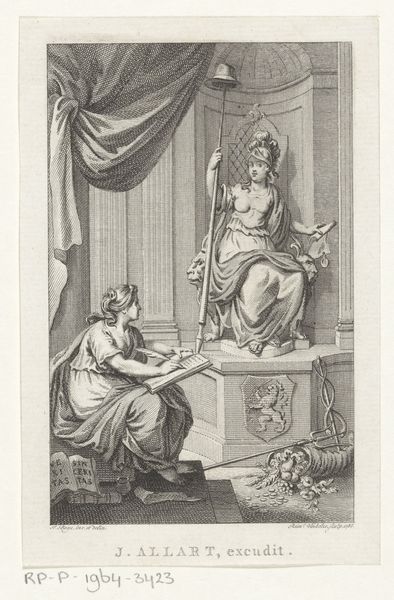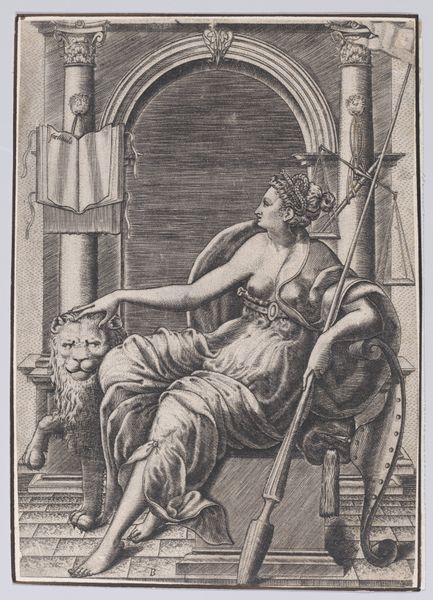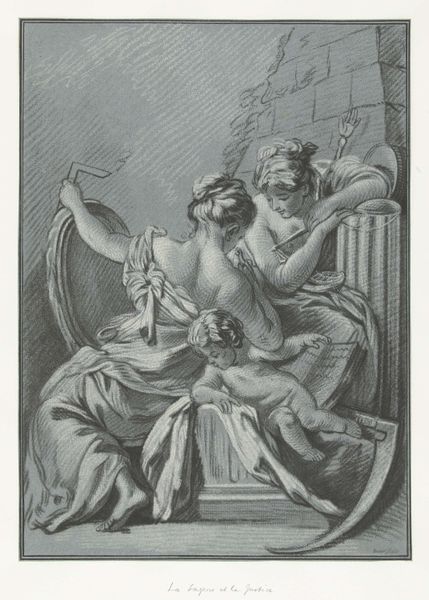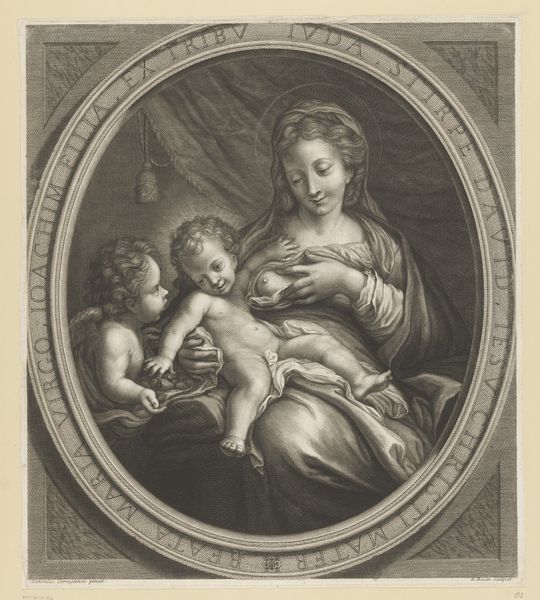
Dimensions: 112 × 95 mm (image); 123 × 106 mm (sheet)
Copyright: Public Domain
Francesco Bartolozzi made this print, "Ticket for the Benefit of M. Gardini", in 1782, using etching and engraving. These printing processes were crucial for disseminating images widely during the 18th century. Bartolozzi skillfully combines etching, for the softer, tonal areas, with engraving, for the finer lines and details. This hybrid approach allowed for both efficiency in production and a high level of artistic expression. The process involves coating a metal plate with a waxy ground, drawing through it to expose the metal, and then immersing the plate in acid. The acid bites into the exposed lines, which are then inked and printed. Engraving, on the other hand, requires directly incising the lines into the metal with a tool called a burin. These reproductive techniques played a significant role in shaping public taste and promoting cultural events like musical performances. The print itself becomes a commodity, a ticket representing access to a cultural experience. This piece is a reminder that art is not just about individual genius, but also about the means of its production, distribution, and consumption.
Comments
No comments
Be the first to comment and join the conversation on the ultimate creative platform.
